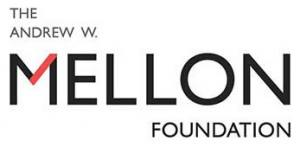John Arroyo
2018-2019
Mellon Fellow
Affiliation at time of award:
Ph.D. Candidate
Department of Urban Studies and Planning
Massachusetts Institute of Technology

Shadow Suburbanism: Mexican Everyday Life and Fear in Greater Atlanta
Historical patterns of U.S. migration locate Latino immigrants in dense urban centers, but recent demographic shifts reveal peripheral suburbs and exurbs—specifically in the South—as the new host destinations for Latino settlement. This “Latinization” phenomenon is evident by spatial changes to housing, commercial corridors, public space, and transportation networks that are inconsistent with the previous image of white, suburban America. As suburban ethnic diversity rapidly gains more ground, however, the discourse on Latinos and their right to the city continues to be politicized, questioned, and debated. Mr. Arroyo’s project relies on qualitative data (interviews, participation observation, and archival policy and news data) to analyze the role that municipal-level institutions in suburban Atlanta (Gwinnett County) play in planning and designing for growing influxes of Mexican immigration since 2000. This project illustrates how fear, invisibility, and immigrant agency manifest across a variety of Mexican communities and their suburban-built environments.

COLLOQUIUM
Speaker: John Arroyo, 2018-2019 SAR Mellon Scholar, Assistant Professor, University of Oregon*
Location: Eric S. Dobkin Boardroom, School for Advanced Research, Santa Fe, NM
Where Mexican immigrants live in the United States plays a critical role in how they adapt to their host society—and how their host society reacts to their presence in a physical context. Over the past twenty years, the mobility patterns of surging Mexican populations across Georgia have had a major influence on suburban space. Based on two years of ethnographic research, John Arroyo examines how fear, invisibility, and agency manifest across the residential built environments of newly Mexican areas of greater Atlanta and explores how Mexican-origin people either adapted to or reshaped suburban housing at various scales. Additionally, he shows how the spatial ideals of Latino urbanism foment reactionary land use and zoning policies throughout small suburban municipalities on Atlanta’s periphery. In a twenty-first-century America defined by exponential Latino-community growth, this emergent case study illustrates how Mexican-origin populations navigate the challenges of urbanism when settling in places unprepared for seismic population shifts.
*When John Arroyo was awarded the Mellon Fellowship at SAR, he held the position of PhD Candidate in the Department of Urban Studies and Planning at MIT. He later completed his dissertation and accepted a job as Assistant Professor at the University of Oregon.